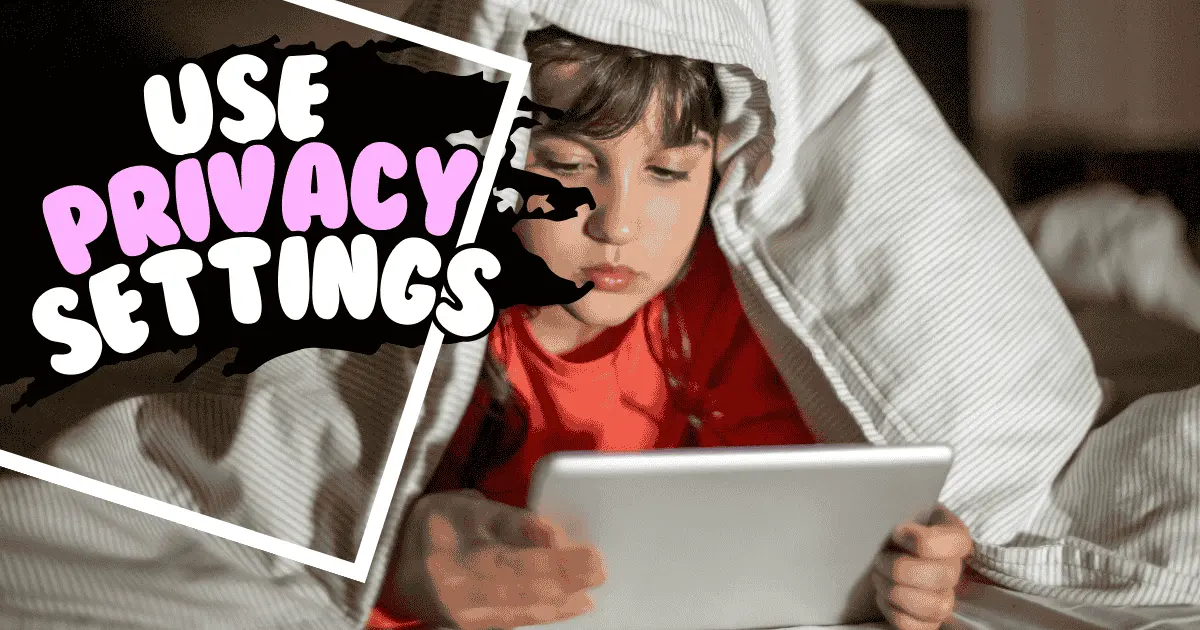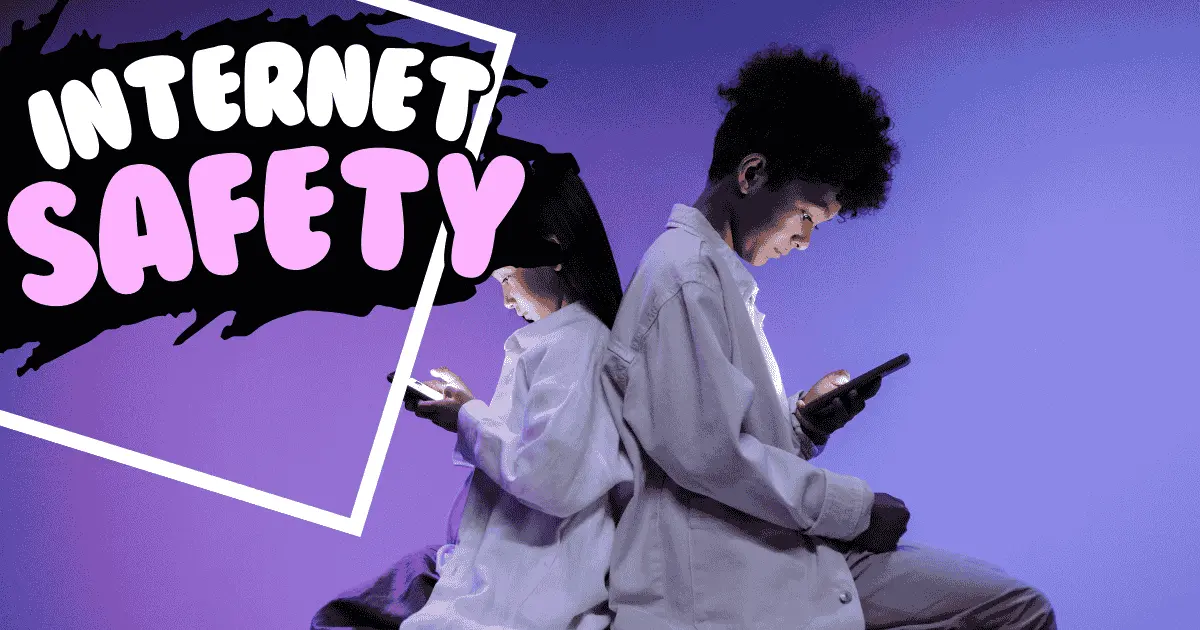Did you know that 70% of children under 12 are already using the internet? With the increasing role of digital technology in our lives, it is essential for parents to guide their children through this complex landscape. As a parent, it’s natural to be concerned about your child’s safety, especially when they begin exploring the vast world of the internet. But don’t worry – you’re not alone in this! Let’s discover how we can safely introduce our little ones to the online world, so they can explore, learn, and have fun without fear.
Hey there, it’s Noor Fatima here, as your supportive family partner and home consultant. In this post, I will cover the importance of internet safety for kids, the potential risks, practical tips for teaching safety, and resources to help you along the way.
What is Internet Safety for Kids?
Understanding the Basics
Internet safety for kids involves creating a secure and positive online environment that protects children from harmful content and interactions. It’s about teaching children the skills they need to safely and responsibly use the internet. This includes technical measures like setting up parental controls and behavioral approaches like encouraging good digital habits.
Why Internet Safety Matters
Internet safety is crucial not just for avoiding harmful content but also for developing good habits that keep kids secure long-term. Teaching children about online safety helps them make informed decisions, build resilience against negative influences, and avoid risky situations. It’s an essential part of their digital literacy and overall well-being.
The Growing Role of the Internet
The internet has become an integral part of children’s lives, used for learning, socializing, and entertainment. This increasing digital presence makes it more critical than ever to ensure children’s safety online. Parents play a vital role in guiding their children through the digital world and helping them develop healthy online habits. You can read my post on A 9-step Guide for Parents to develop Reading Skills in Child here!
Understanding the Risks of the Internet for Children
Cyberbullying
Cyberbullying is when someone uses digital devices to harass, threaten, or embarrass another person. It can happen through social media, messaging apps, or online games and can have a devastating impact on a child’s self-esteem and mental health. It is important for parents to educate their children about recognizing and responding to cyberbullying.
Inappropriate Content
Children can accidentally stumble upon violent or explicit content that is not suitable for their age. It’s critical to be aware of the types of harmful content your child might encounter and take steps to prevent access. This includes using parental controls and talking to your child about what to do if they see something upsetting.
Online Predators
Online predators are individuals who use the internet to exploit children. They can disguise themselves as peers or trusted adults and try to build relationships with young users. Parents should talk to their children about the dangers of sharing personal information online and encourage them to report any uncomfortable interactions.
Data Privacy
Children often unknowingly share personal information online, which can put them at risk of identity theft or unwanted tracking. Teaching kids about data privacy is essential to protect their personal information. Encourage them to use privacy settings on social media and to think carefully before sharing details about themselves online.

How to Teach Internet Safety to Your Kids
Start Early
The best time to teach your kids about internet safety is before they start using digital devices independently. Begin with simple concepts and gradually introduce more complex topics as they grow older. Early education helps set a strong foundation for safe and responsible internet use.
Set Boundaries and Rules
Create clear rules around internet usage, including time limits and website restrictions. Discuss these guidelines with your child and explain why they are important. Setting boundaries helps prevent overexposure and encourages kids to balance online activities with other aspects of their lives.
Monitor and Guide
While it’s important to monitor your child’s online activities, it’s equally crucial to guide them in making responsible choices. Encourage open communication about their internet experiences and be available to answer questions or address concerns. Building trust ensures that your child feels comfortable sharing their online experiences with you.
Use Parental Controls
Parental controls are tools that help manage what your child can access online. Set up parental controls on devices and apps to restrict inappropriate content and limit screen time. Regularly review these settings to ensure they remain effective as your child grows and digital platforms evolve(Some of the useful parental-control apps are mentioned below).
Teach Digital Etiquette
Digital etiquette is the practice of respectful and responsible online communication. Teach your child the right way to interact with others on the internet, including respecting people’s privacy and not engaging in harmful behavior. Instilling good digital manners helps build a positive online community.
Safe Online Activities for Kids
Educational Websites and Games
The internet offers a wealth of educational resources that can benefit your child’s learning. Introduce them to safe, age-appropriate websites and apps that encourage exploration and creativity. Educational games can also make learning fun and engaging.
Setting Up Digital Playdates
Digital playdates allow children to connect with friends in a controlled online environment. Ensure these virtual interactions are safe by using authorized platforms and monitoring the activities. Digital playdates can be a great way to socialize, especially during times when in-person gatherings aren’t possible.
Encourage Creativity
Encouraging creativity online can help children explore their interests and develop new skills. Recommend platforms that support creative expression, such as art apps or coding games. Encourage kids to showcase their talents in a safe and supportive online community.

Tools and Resources for Parents
Parental Control Apps
There are several apps available that help manage your child’s internet access. Popular options include:
These tools offer features like content filtering, screen time management, and activity reporting.
Online Safety Courses
Consider enrolling in free or affordable online courses to learn more about internet safety. Many organizations offer resources specifically designed for parents, providing valuable tips and strategies to protect your child online.
Educational Videos
YouTube channels and websites offer educational videos about online safety for both parents and children. These resources can provide practical advice and demonstrate how to implement safety measures in a simple and engaging way. I’ve also posted on Early Childhood Creative Education of Kids, must read it.
Conclusion
Teaching kids about internet safety is an essential part of modern parenting. By setting boundaries, maintaining open communication, and utilizing available tools, parents can guide their children to become smart and responsible digital citizens. Start implementing these tips today to protect your kids in the digital world. Thanks for reading my post. Don’t forget to share your feedback! Let me know in the comments below if this guide was helpful for you, or feel free to share anything else you’d like.
FAQs
At what age should I start teaching my child about internet safety?
It’s best to start teaching internet safety at a young age, once your child begins using digital devices. Introduce simple, age-appropriate lessons and gradually build on them as your child matures.
How can I limit screen time while ensuring my child gets the most from the internet?
Balance screen time with physical activity, creative play, and learning. Set clear limits and encourage your child to explore educational websites and apps that align with their interests.
What are the best apps for teaching kids about internet safety?
Apps like “Internet Safety for Kids” and “Be Internet Awesome” offer interactive lessons and games that teach internet safety concepts in a fun way. These tools can reinforce what you’ve discussed at home.
How do I keep my child safe on social media?
Teach kids the importance of privacy settings and staying safe on social media platforms. Encourage them to think carefully before sharing personal information and to report any uncomfortable interactions.
Can parental controls track everything my child does online?
While parental controls are helpful tools, they have limitations and may not track everything. Communication with your child is key to understanding their online activities and addressing any concerns together.
